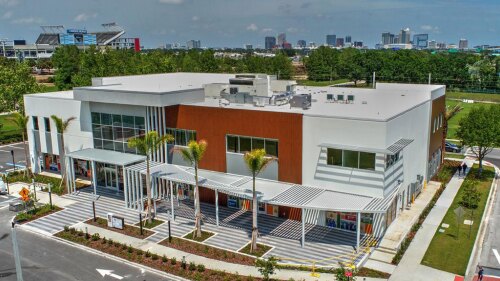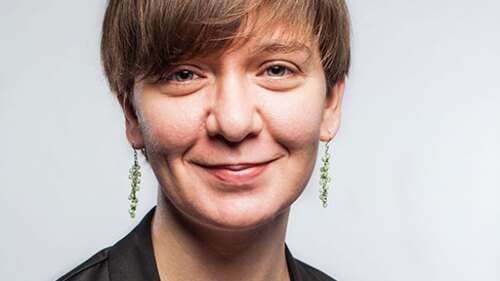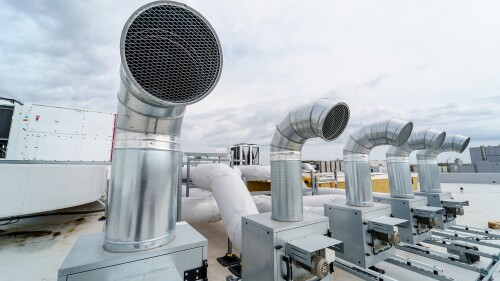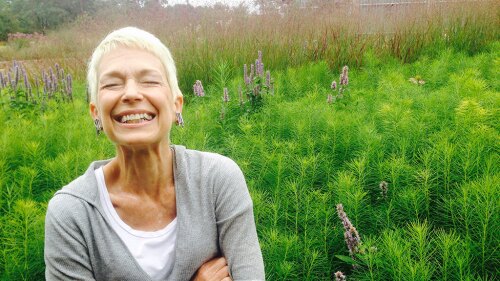The creation of public space from unused, underused, or unequally shared linear spaces in urban areas has been happening for a long time. Major reference points in the architectural and planning worlds are Boston’s Emerald Necklace, designed by Frederick Law Olmsted (1878–1896); Freeway Park in Seattle (1972-1976); the Baltimore Inner Harbor (1963–1983); the Promenade Plantée in Paris (1987-1994); and the High Line in New York (2005–2019).
The last project, New York City’s High Line, which opened in 2009, ignited intense interest from city leaders worldwide because of its outsized economic impact. In its wake, several projects reusing elevated rail corridors picked up momentum and were realized in Chicago and Philadelphia. So did ones at grade level, namely Atlanta’s Beltline and Detroit’s Dequindre Cut. Despite its cultural sway, however, this type of project, converting transportation infrastructure, still does not have a name, some 15 years since the High Line’s initial opening.
This article unites these projects under one name: infrastructure adaptation.
Transportation infrastructure is typically big, central, connective, dramatic, and public. Because of these attributes, infrastructure adaptation projects can serve to improve carbon outcomes with urban design while catalyzing positive economic change. By transforming transportation corridors through adaptive reuse, retrofitting, or right sizing, cities can provide low carbon mobility, densify urban form, and attract residents who value livability--in addition to garnering the traditional benefits of open space like community building, improved mental and physical health, biodiversity, and climate adaptation.
Infrastructure adaptation has been the subject of a research project for many years by XL Lab, the research and innovation lab at SWA Group. The project brings together 60 port, river, rail, and road infrastructure adaptation interventions together, highlighting strategies, benefits, elements, and processes in common. Each of the built projects, by a range of international landscape architects, urban designers, and architects, demonstrate different ways engineered systems can evolve to serve broader purposes.
Out of SWA’s detailed case studies around the globe, here are three which present a cross section of sizes and cost.
Montreal
Place des Festivals
Road infrastructure
The former red-light district of Montréal—the Quartier des Spectacles—has been marred by megaprojects, road widening, and vacant parcels. Today, it has one of the highest concentrations of performance spaces in North America—with 80 in one square kilometer (about a third of a square mile)—and hosts 40 festivals each year, in all seasons. The Quartier des Spectacles was first imagined in 2001 by a group of leaders from the city’s cultural sector. A year later the project was presented to the mayor by Jacques K. Primeau, artists’ agent and president of a recording industry group during the city’s participatory master planning process.
Two years later, in the wake of a huge municipal merger that doubled the city’s population, the Quartier des Spectacles Partnership (hereafter, the Partnership) was set up by the municipal government once the mayor was convinced that culture and creativity could be used to attract more economic, touristic, and cultural activity to Montréal. In 2007, the municipal, provincial, and federal governments committed equally for a total of C$120 million (86.3 million USD) to fund the first phase of work in the Quartier des Spectacles, which included park creation, street redesign, pedestrian walkways, and electrical work.
The initial phase focused on the area around the established 1960s megablock, Place des Arts, particularly on the creation of new public spaces equipped for continual use as outdoor performing arts venues. The Montréal-based architecture and urban design firm Daoust Lestage was commissioned to develop a comprehensive plan and detailed design for the district. The keystone site was the C$35.5 million ($25.5 million USD) Place des Festivals, the quarter’s largest public space, which opened in 2009. It was created out of a surface parking lot on a full city block that was so far above street level, it created a canyon with a five-lane road at its bottom.
The designers cut back the grade, narrowed the street to three lanes, and widened the pedestrian/plaza space on a diagonal from 11m-27m. Doing so left enough topography to create an amphitheater, albeit an unusual one. Across the street, the four custom lighting standards, at 24 meters tall (79 feet), become beacons visible from far away and provide a sense of enclosure over the plaza and street, which is sometimes closed for festivals and events.
Even though the site accommodates 40 festivals a year, there are times when it is not programmed and car traffic flows through normally. In this mode, the black granite paving contrasts with the honey locust trees and the 200-jet fountain, which can be turned off at any time to function as a simple plinth for programming or for public art.
Since the trilateral development of the Quartier des Spectacles, more than C$1 billion has been invested in 48 construction projects 2007–2014. Such development means that the city collects an additional C$20 million ($719,8 million USD) each year in property taxes, which repaid its initial investment after only two years.
From the vantage of the Partnership’s board, Primeau, the original proponent of the project in 2002, has witnessed 16 years of the quarter’s evolution. Before departing his position as president, he aired his concerns about the real estate boom, which was reducing the space available for outdoor stages and siphoning off food and beverage revenue from the festivals. In some ways, the quarter may be becoming a victim of its own success.
Shenzhen
Shekou Coastal Promenade
Port infrastructure
Shekou is a waterfront district on the southern tip of Shenzhen, China, with a view across the bay, toward Hong Kong and the mouth of the Pearl River Delta. Beginning in 1980, Shekou and much of the surrounding region were declared a Special Economic Zone as part of a broader national campaign to open up parts of the country to foreign investment.
During the 40-year period of intense economic development that followed, Shenzhen boomed to become a megacity of more than 10 million people, and the Shekou district was radically transformed from a small autonomous fishing community into an international urban hub. As part of this transformation, more than 65 square kilometers (25 square miles) of marsh and shallow bay were filled, nearly obliterating the native mangrove and salt marsh shoreline—and, with it, vast tracts of rich marine, intertidal, and coastal wildlife habitat.
In 2005, in an effort to address some of this environmental degradation without compromising future economic development, local officials announced a competition to develop a master plan for 15 square kilometers of Shenzhen Bay. The design firm SWA was selected to produce the plan, which included a linear park designed to serve as an urban growth boundary along the city’s high-density southern waterfront.
Six years later, the first section of the Shenzhen Bay Coastal Park was completed as a nine-kilometer ribbon of trails, open areas, and environmental restoration projects. Beginning at the entrance to a 750-acre (303 ha) urban mangrove preserve, the park’s walking and biking trails hug the city’s shoreline and run east-west, alongside a major urban expressway, before turning 90 degrees to the south and ending near a transit center at the base of an international bridge to Hong Kong.
In 2014, SWA won the follow-up competition to extend the park further to the west (per the original master plan), connecting it to the Shekou Ferry Terminal and a newly built mixed-use development. The result was six more km of trails, plazas, and open spaces known as the Shekou Promenade.
Completed in 2017 in three phases, the Promenade is connected to the Shenzhen Bay Coastal Park via an eye-catching pedestrian bridge that spans the mouth of a small urban stream. Tree-lined pathways, offset from the shoreline, meander through a sequence of undulating landforms, stepped embankments, recreational lawns, boardwalks, plazas with sculptural seating, and an overlook with views of Hong Kong.
The transformation of this postindustrial shoreline has continued to contribute to the city’s economic growth without further degrading coastal ecosystems. Since the project opened, it has had an average of 20,000 daily visitors.
Los Angeles
Milton Street Park
River infrastructure
Ballona Creek once meandered through Los Angeles irrigating Ranchos and serving as a movie backdrop. But during the rainy season, it would turn into a torrent, rushing to the Pacific Ocean and carving new paths. The county began work straightening the creek in the 1920s and in the late 1930s, the U.S. Army Corps of Engineers (the Corps) channelized and concrete lined most of the lower nine miles in a multi-decade, citywide flood protection campaign. Later, during the 1970s, on the channel’s north levee, the county and the Corps striped a 6.5-mile Class I bike trail on top of the service road.
The barebones path traversed several residential neighborhoods connecting employment centers, schools, libraries, shopping centers, parks, and natural resources such as the beaches and the Ballona Wetlands. The popular route was defined by the dramatic contrast between the waterway’s stark and graffitied cement geometry and the verdant wetlands, ocean, and beaches. Unfortunately, although three million Angelenos live within three miles of the path, it did not offer them many access points.
In 2007, two local conservation authorities (public agencies empowered by the state to acquire, preserve, and protect open space in a certain area) partnered and received funds resulting from a state ballot proposition. They acquired a 1.2-acre undeveloped parcel along the bike trail. The following year, SWA was selected to lead the design of the park, guided by the goals of providing recreational opportunities, promoting alternative transportation by adding new access points to the bike path, and enriching native habitat along the creek.
Together, SWA and the conservation authorities conducted community meetings and public design workshops focused on the safety needs of area residents. The project opened to the public in 2016 as Milton Street Park, and was celebrated as the first major public amenity along Ballona Creek by local stakeholders including students and faculty at a nearby middle school who began including the park to support their science curricula.
The linear park, which is about 1,000 feet by 45 feet, is located next to the “soft bottom” part of the creek, where aquatic plants and animal life are abundant. The park features California native shade trees, drought-tolerant grasses, and other fragrant herbaceous plantings. Accessible pedestrian pathways meander along the richly planted levee flanked by low gabion walls, group seating areas, and a central shade pavilion. Bike racks, water fountains, and a series of outdoor rooms provide walkers and cyclists with places to rest.
Stormwater is diverted through a hydrodynamic separator unit that removes trash and debris. The water is then pumped into a series of engineered bioswales and vegetated buffers. A detention basin sits below the swales and collects the clean water as it percolates through before discharging into the creek.
A grand stairway at the park’s main entrance doubles as an outdoor classroom for the neighboring school, and integrated interpretive signage transforms the greenway into a public education center where the park’s ecological performance is on display. Since its completion, the park has served as shady oasis for neighborhood residents to host small gatherings and observe local wildlife. Half-way between the beach and the Baldwin Hills recreation area, the park adds visibility to the popular bike trail and offers families and amateur cyclists a safe and convenient place to access some of the city’s marquee natural resources.
The park’s opening was a key moment for waterway projects in the region. It had been five years since city approval of a recreational master plan for the largest river in the county—the L.A. River. Yet none of the 240 recreational amenity projects had been delivered and local communities were becoming critical. Milton Street Park served as an important proof of concept helping catalyze advocates of expanded recreational amenities along the urban watercourse including municipal leaders, non-profit agencies, bicycle advocacy groups, and real estate developers.
In 2018, for the Ballona Creek Revitalization Task Force, a local councilman worked with SWA to produce a preliminary plan identifying six short-term interventions along the channel. Later in 2020, SWA partnered pro bono with local organizations and non-profit groups to develop a vision plan to extend the Ballona Creek pathway by two miles to reach underprivileged communities and connect to a transit line. In 2021, the Park to Playa Trail opened, giving more inland residents access west via the Ballona Creek route.
To understand ways that people use active modes of transportation throughout Los Angeles, the city’s Department of Transportation performs and annual “Walk & Bike Count.” Data from August 2024 showed a 42 percent increase in biking since 2021 and revealed approximately 400 users per hour along the Ballona Creek Bike Path on a single weekend day. These numbers point to the changing role of alternative transportation in one of the country’s most notoriously car-centric cities. As bike advocacy groups continue to press for improved alternatives to vehicular roadways, places like Milton Street Park illustrate the growing significance of place-making along these expanding mobility corridors.
Conclusion
This specific project type—infrastructure adaptation—is particularly impactful in improving carbon outcomes with urban design while catalyzing positive economic change. A major takeaway is that for greatest carbon impact, you want to have or connect to a linear site, design the project as adaptive reuse, retaining as much material as possible, and plan for surrounding density. For greatest economic impact, design can directly contribute towards attractiveness to tourists, residents, and businesses as well as municipal savings, as with low impact stormwater management. But for the other aspects of positive economic change, there needs to be coordination with other actors as well—like planners in the city who can represent residents, a mayor’s office that can prioritize and mobilize municipal efforts, and district level development and programming entities like the Partnership in Montreal that can manage change over the long term.








